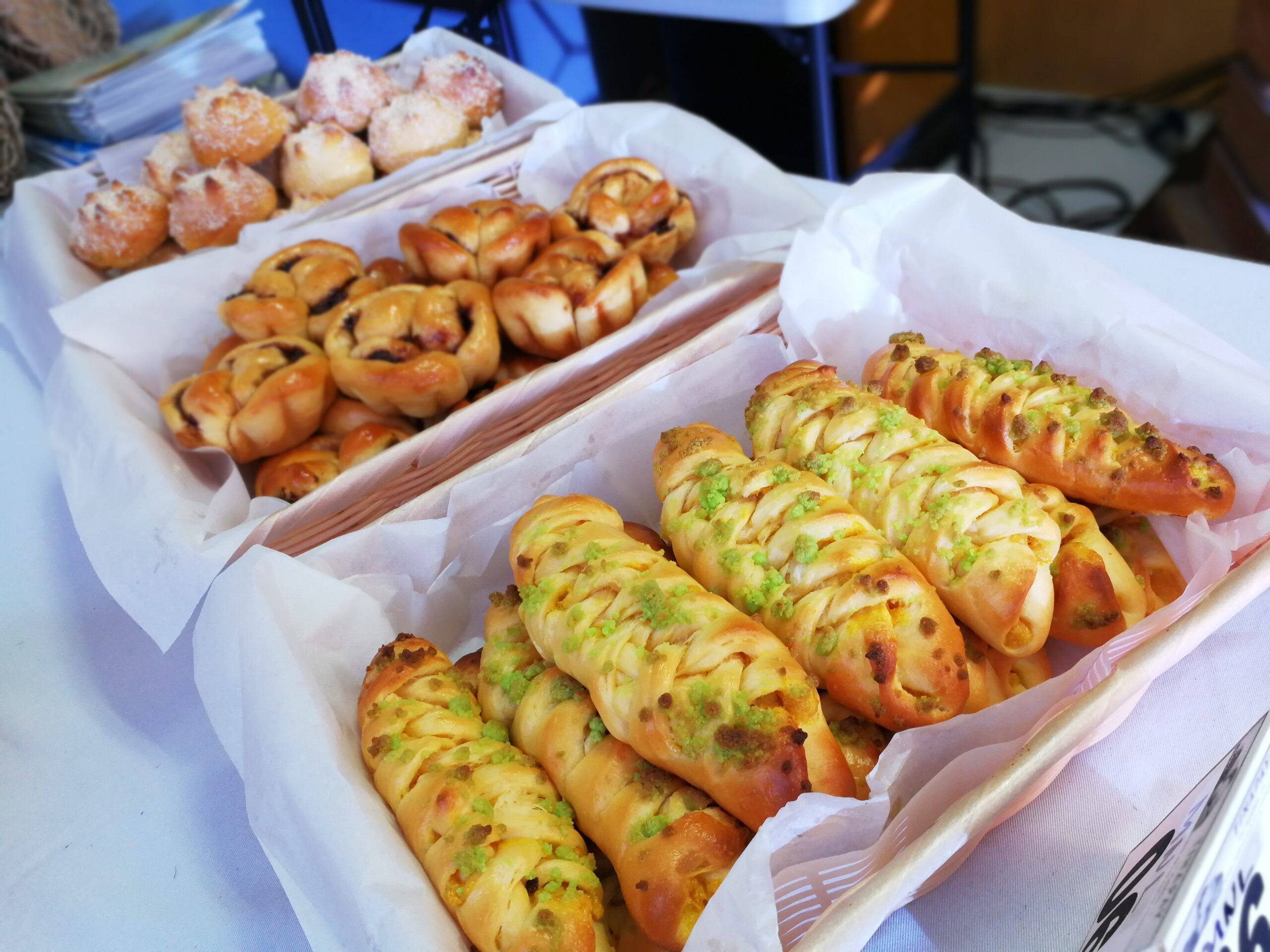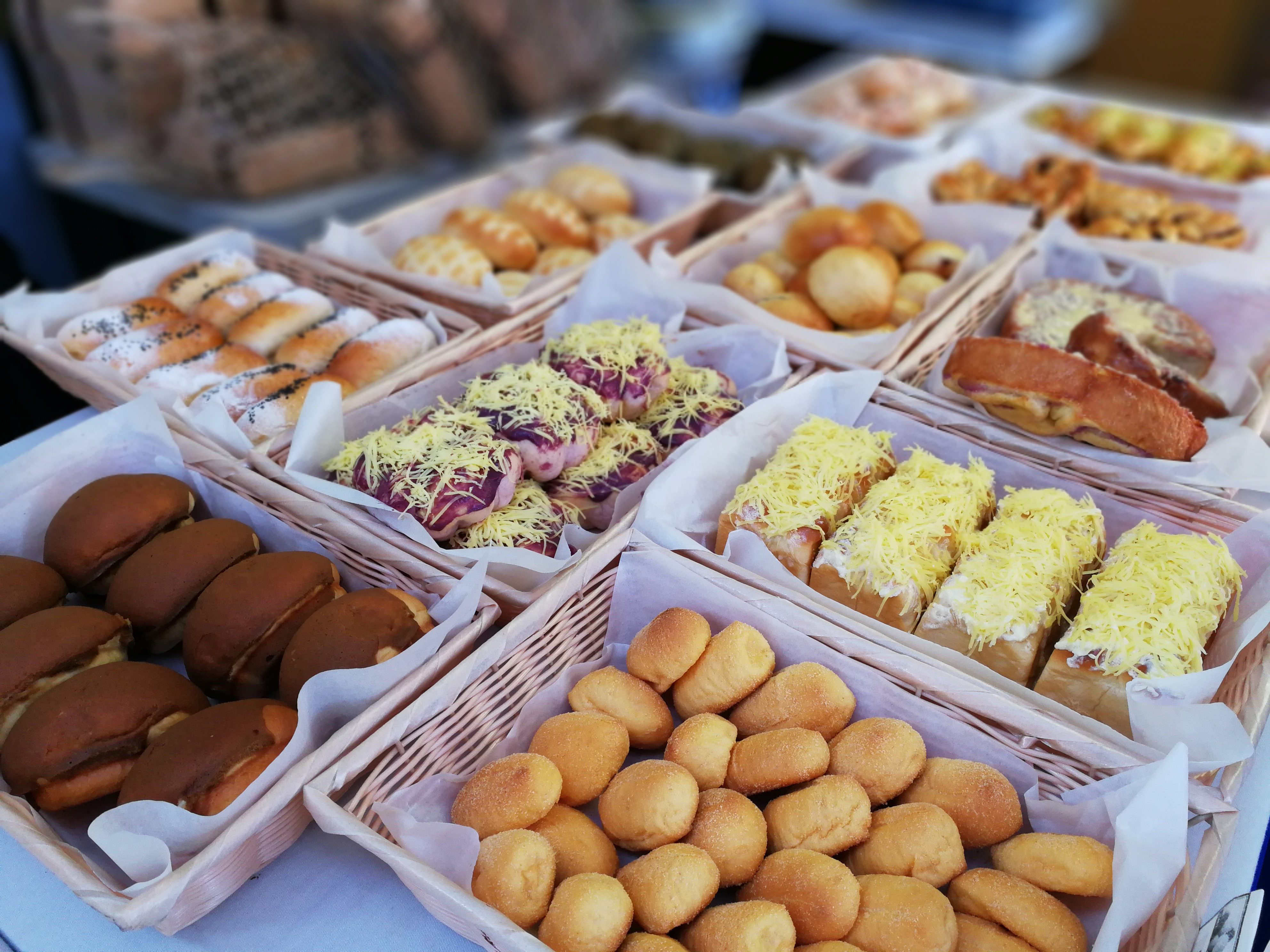SUMMARY
This is AI generated summarization, which may have errors. For context, always refer to the full article.

MANILA, Philippines – If you were to ask me of my experiences with bread, what immediately comes to mind will not be associated with perfectly shaped croissants or those fancy looking chichi breads but with something a little less glamorous.
Instead, what I will most likely tell you are childhood afternoons where I eagerly await for a can of Reno liver spread to be opened, so I can slather it on my waiting hot pandesal. Or maybe, I will enthusiastically regale you with evenings at the college dorm anticipating Manang’s freshly baked putok that becomes extra special when eaten hot with margarine and a sprinkling of sugar; Or those nights when I am tasked to buy food for our theatre company which included dozens of specially-requested pan de coco for the starving cast.
I believe that I am not unique in this aspect. I imagine each one of us has a specific Pinoy bread story to share, but for some reason we don’t see these products offered by more upscale bakeshops. There is pandesal and ensaymada, of course. But it somehow stops there. Why are there no entries for the best pan de coco or kalihim in town? How come?
While there are a number of theories to answer these questions, two food companies have come together to address this gap on how we appreciate traditional Filipino bread.
Enter the Tinapay Natin Pinoy Bread Baking Competition, an annual national baking event co-organized by Pilmico and Max’s Corner Bakery. Now on its second year, it is open to student bakers and home bakers, 18 -35 years old, and seeks to elevate the somewhat lowly status of the kinds of bread that our local panaderia offers.

Like most baking competitions, contestants are judged based on technical expertise, creativeness and of course, their delicious interpretations on the classics.
During the elimination rounds, each team of two is tasked to come up with two breads: a regional bread that embodies a specific region or province, literally a “tinapay natin” and a modern one that showcases their riff on a familiar pinoy bread. For the final event, as an added challenge, grand finalists were asked to come up with a new creation of their own choosing.
At the grand finals held at the University of Santo Tomas, the final 6 teams demonstrated their commitment to the challenges at hand and it shows in their respective handiworks. Pandesal and ensaymadas made their expected presence but on the whole there was variety. There were rolls, modern versions of pan de coco, loaf breads filled with an array of fillings: macapuno, mango, ube. Among the standouts was the Star Monay de Coconut bread that looks like normal putok bread on the outside but is soft and chewy inside.
Regional pride also came into play when teams consciously sought out ingredients endemic to their province like durian and strawberries, and used them prominently in their baked entries.
Another factor that also sets Tinapay Natin apart is its focus on the stories that accompanied the bread entries. Aside from the actual output presented, contestants were also judged based on their back-stories.

It is heartening to hear how the younger generation regards their experiences with bread and how these in turn enrich Filipino culture.
There is the piece of history that informs Iloilo’s Rey Marc Sinco and Mark Vallente’s decision to perfect the recipe for Baliuag pan de sal as their regional offering. In Spanish times, churches normally use egg whites as cement binders for their buildings. As a result, there was an abundance of egg yolks which the more enterprising bakers in the area incorporated into their local pan de sal. Hence, the birth of the Baliwag pan de sal, “a decadent pandesal that is light and flavorful.”

There is the touching story of Cavite’s Emmanuel Banco, Jr who experienced hardships with his family and the role bread has in his life-affirming story. “Mula noong maliit pa po ako, ako na po ang nag-raise sa mga kapatid ko. Pag madaling araw, nagtitinda po ako ng pandesal para me makain po kami. Kaya po this is my life,’ he said, choking back tears.
His description of their traditional bread entry, the graciosa bread of Cavite – one of this year’s “discovery” is pure Pinoy in its aspirations: graciousness as the name implies, hope and unity.
And of course, who did not smile when Ella Joy Simeon, one half of this year’s ultimate winners from Baguio, recounted how the breakfast rituals of coffee and putok with her father and the rest of her Cordilleran family inspired her to innovate on their favorite bread.
Despite our propensity to relegate them into the background, stories like these underscore how important traditional bread is to the lives of Filipinos.
According to Chef Myrna Segismundo, who co-judged the finals there is a need for us Pinoys to hear these stories. We need ‘… to talk about the monay, to talk about the cheap ensaymada, the pan de regla, the pasencia, the graciosa and all that. No one will know this if you keep it at the level of poverty.” We don’t benefit at all by regarding them as bread “that only the poor can afford.”
The contest is far from perfect, she says and there are many more aspects that need to be refined. Nevertheless, in the eyes of this long time advocate for traditional Filipino food, it is a commendable effort.
“My dream is to see our Philippine breads along side the traditional bread of other countries. Like you go to Turkey, in the airports, you will see all their local breads highlighted and showcased in very nice packaging and escaparates for the transit passengers to take home and bring with them,” she said.
A few upscale bakeshops, like some in Tagaytay have started offering panaderia fares. But thus far, these are the exceptions rather than the rule.
It’s in this aspect that Max’s Corner Bakery’s participation becomes crucial. For a limited time, the creations by the grand winners will be made available to the public. All three breads will be distributed and sold nationwide through its many branches.
Gelonie Yap, Assistant Vice president of Pilmico sums it up: “We are proud of the quality of breads produced by our finalists; a true indication that the Pinoy bread culture is very much alive today. We hope to keep on promoting creativity, innovation and love for local food among Filipinos.” – Rappler.com
Add a comment
How does this make you feel?
There are no comments yet. Add your comment to start the conversation.